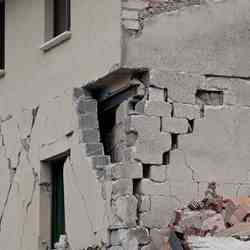Earthquake Research Advances
Earthquake Research Advances
The aim of Earthquake Research Advances is to advance our understanding of earthquake physics, expand our ability to observe earthquake-related phenomenon and improve our mitigation of seismic hazard...
The aim of Earthquake Research Advances is to advance our understanding of earthquake physics, expand our ability to observe earthquake-related phenomenon and improve our mitigation of seismic hazards. To fulfill this,the journal publishes original research articles that focus on all aspects of earthquake studies. Topics covered include, but are not limited to:
Tectonic environments and structures of the Earth, especially, seismogenic fault zones
Long- and short-term behavior of fault zones
Laboratory, field and numerical experiments on the physical process of earthquakes
Primary and secondary hazards associated with earthquakes
Forecasting and reduction of seismic risks
Seismic behavior, modelling and dynamic analysis of engineering structures and non-structural elements
Seismic protective systems of structures and infrastructure
Seismic structural health monitoring
Seismic risk and resilience assessment
Development of earthquake engineering practices, seismic codes and regulations, and earthquake-related public policies
These interdisciplinary subjects may involve fields such as geology, seismology, geodesy, rock physics, earthquake engineering, computer science, and earthquake science popularization. The overarching goal of this journal is to iestablish itself as a respected English-language publication in the field of earthquake science.
Society affiliation
The China Earthquake Networks Center (CENC) was established on October 18, 2004, and has since served as a vital business hub and international interface for China's earthquake disaster mitigation efforts. CENC stands as a national-level center dedicated to earthquake monitoring, forecasting, early warning systems, emergency response coordination, ...
The China Earthquake Networks Center (CENC) was established on October 18, 2004, and has since served as a vital business hub and international interface for China's earthquake disaster mitigation efforts. CENC stands as a national-level center dedicated to earthquake monitoring, forecasting, early warning systems, emergency response coordination, and information dissemination. Its primary mission is to offer essential technical support to the Emergency Command Center of the China Earthquake Administration.
Call for Papers
Active Tectonics of the Eastern Mediterranean Region: Case Studies on Earthquake, Volcano and Tsunami Induced Hazards
Deadline for Submission: 15 SEPTEMBER 2025
Earthquake Precursors: Identification, Validation and Physical Mechanisms
Submission deadline: September 30th 2025
Seismic Disaster Effect and Disaster-Causing Mechanism of Rock Engineering
Submission Deadline: 31 Dec. 2025








